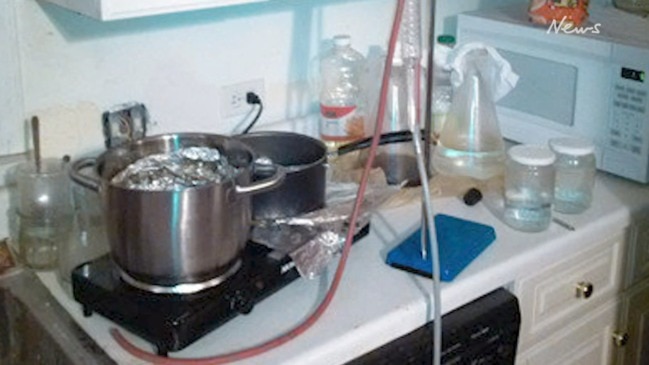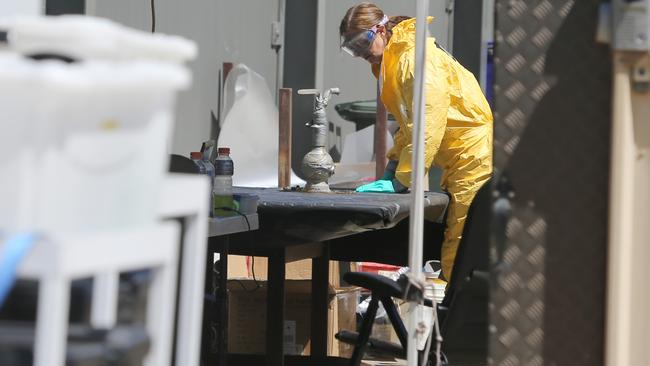Flinders University research reveals meth’s indelible stain on houses and items
Homes where methamphetamine was cooked are stained with residue of the lethal drug, researchers have found. Traces of the drug do not break down and contaminate other items.

Law and Order
Don't miss out on the headlines from Law and Order. Followed categories will be added to My News.
Like an indelible stain, methamphetamine production leaves homes and household items contaminated for years, even after the cooking has stopped, a new study shows.
Research by Flinders University on a home where methamphetamine was produced more than five years ago has shown that the drug is not breaking down or being removed.
Instead, the toxic substance contaminates household items which can then be removed from the home.
Flinders University researcher Dr Kirstin Ross said the property she and fellow academics Dr Jackie Wright and Associate Professor Stewart Walker analysed had been sold and lived in after the meth kitchen was shutdown.
“Although the time since the cooking had taken place was significant, the levels of contamination were extremely high in both household items that were part of the house when cooking was taking place, such as blinds, carpets, and walls, and also in articles brought to the house post-cooking like rugs, toys and beds,” she said.

“The most significant mass of methamphetamine was reported to be within the blinds. These
are plastic blinds that were present when manufacture was suspected to have been undertaken.
This is consistent with observations from other properties where higher levels of
methamphetamine are present in materials such as PVC, polyurethane and stained and
varnished timbers.”
“Without fully understanding the extent of contamination it’s difficult to ensure the correct and most effective remedial approaches are taken so occupants can safely live inside a property which was previously used to produce methamphetamine.
The research raises concerns about whether current methods of detecting methamphetamine residue on the surface of items and walls is revealing the extent of contamination.
